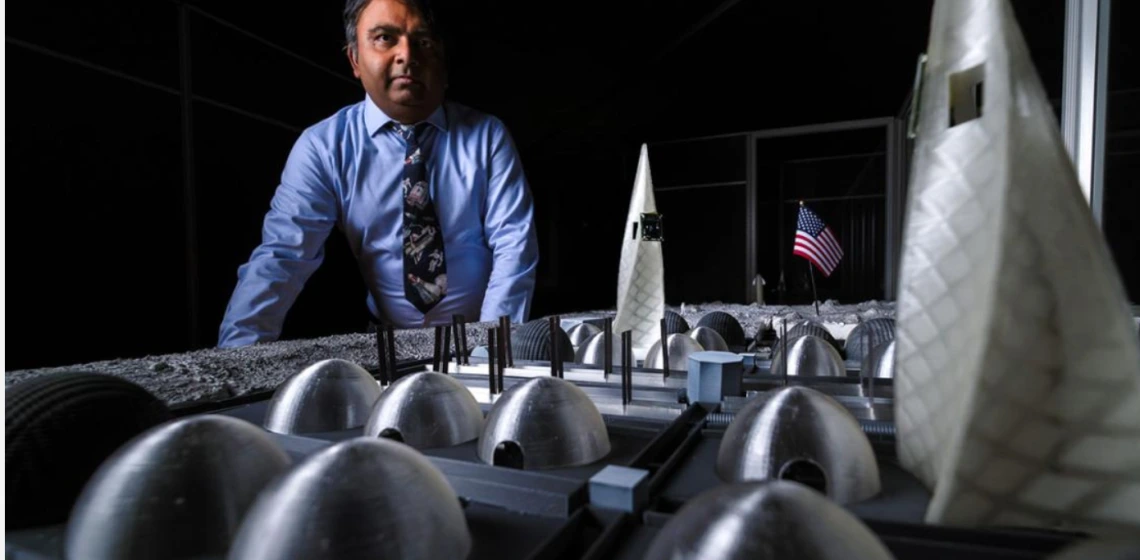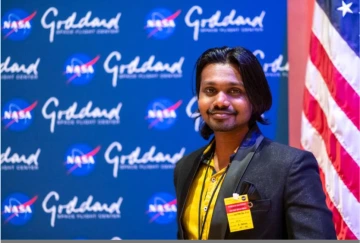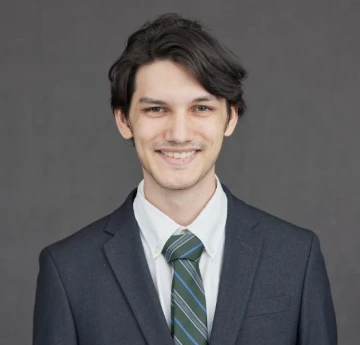NASA-funded summer program opens doors to aerospace workforce

Associate professor Jekan Thanga heads both the ASTEROIDS and SpaceTREx Laboratories, which provide research opportunities to students at every academic level.
Nicolas Gross never thought something he built by hand would wind up orbiting the Earth.
But thanks to the Undergraduate Research and Education Program (UREP), part of the ASTEROIDS Laboratory, he got a paid head start in aerospace studies that led to the out-of-this-world satellite research he does today.
Comprised of a summer academy and up to two years of advanced research opportunities, the UREP program increases student retention and prepares STEM undergraduates from underrepresented groups for careers and graduate school.
Jekan Thanga, associate professor of aerospace and mechanical engineering, leads the summer intensive and calls it a critical part of the NASA-funded experience. The academy promotes undergraduates’ success by building excitement early in their academic journey.
“It’s an opportunity for students to get deep into subject matter over a short period,” he said. “It's like a crash course.”
Students delve into topics like the history of Martian exploration, artificial intelligence and advanced space robotics. The coursework also covers career opportunities in the field related to materials science, planetary science and space systems engineering.
Thanga believes expanding awareness of the many career paths available to aerospace graduates is key to increasing diversity in an industry where women only account for 14%, according to Data USA. Showcasing the variety of opportunities within the field is helping to develop a younger, highly engaged workforce.
And since 2019, the program has served historically underrepresented populations at three times the national average, attracting 32-38% women and 35-40% Hispanic participants every year.
Taking it further
Following the summer’s immersion into aerospace fundamentals, students expand on those basics to develop a research topic focused on their interests. A faculty member then supports them in writing and defending a research abstract. These faculty can become mentors and assist students in developing their research project, which they pursue over the next year or two.

“All UREP students have been co-authors of at least one research paper, and if they perform very well, they get to go to academic conferences and present their work,” doctoral student Athip Thirupathi Raj said.
And all of it is paid. Students in the program receive a stipend for the summer and part-time hourly pay during research years.
“The students who go through the summer program are very creative and have quite a few innovative ideas,” AME doctoral student Athip Thirupathi Raj said. “However, they sometimes need more technical know-how to formulate a good problem statement.”
Raj, a graduate mentor, has helped more than 30 students refine their research projects in the UREP program. NASA recognized his leadership in April 2024, awarding him the Space Tech Catalyst prize.
“Almost all the undergrads who have worked with me have secured internships with NASA or other STEM companies of their liking or have proceeded to grad school,” Raj said.
He wishes he’d had access to a NASA-funded program such as UREP, as the undergrads have a chance to work on real-life problems and prepare early for industry or graduate school.
Which is exactly what Nicolas Gross did after the summer academy. The mechanical engineer graduated with his master’s degree in 2024, but before that, he was a budding undergraduate in the UREP summer program.
“I learned about the space industry, adapting engineering techniques for space applications, and was able to develop several skills that I can use for any project, both on Earth and in space,” Gross said.

Nicolas Gross recently defended his master’s thesis: "Modular Building Block Truss Structures for In-Space and Lunar Applications."
I enjoyed the program so much that I stayed with SpaceTREx during my graduate studies.”
The SpaceTREx lab is a research hub housed in the Department of Aerospace and Mechanical Engineering that develops technologies to survive extreme environments on planets, moons and asteroids.
The academy piqued Gross’ interest in CubeSats, small satellites that can be sent into space for research at a smaller cost. As a master’s student, he worked with Thanga to develop a hard capture mechanism for CubeSat docking. The patent on his design is currently pending.
“For me, the program opened the door to research and allowed me to apply what I learned in the classroom to engineering projects with real-world applications,” Gross said. “I had to be creative with my designs and think in ways that can’t be taught in a traditional classroom."
